While the new Gear VR that's launching next week isn't much changed from the 2016 model, there are a few differences – including a new controller. Let's see how the specs and features of the 2017 Gear VR compare to those of the Oculus Rift.
Size

The Oculus Rift is the smaller headset, measuring 12-percent narrower (side-to-side while wearing), 7-percent shorter (front-to-back while wearing), and 10-percent shorter (top-to-bottom while wearing)
Weight

The Rift is listed as heavier, but that's because Samsung's weight only includes the shell headset (without phone inside). Once you slide in a phone, the Gear VR will weigh between 477 g (Galaxy S6) and 518 g (Galaxy S8+).
Build
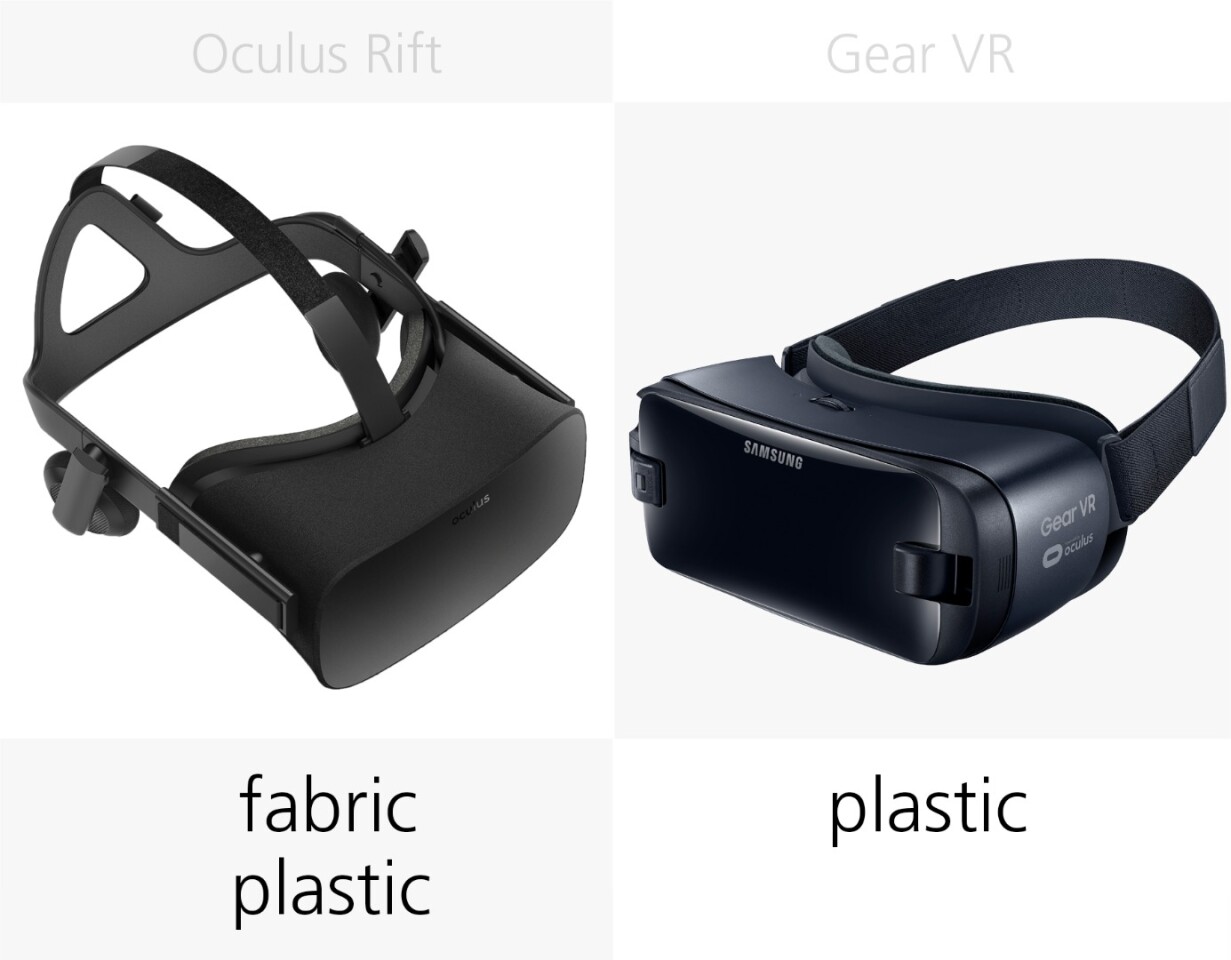
The Rift is made of both fabric and plastic, including a thick and rubbery-feeling material on the band.
The cheaper Gear VR, unsurprisingly, is made of cheaper-feeling plastics.
Host device
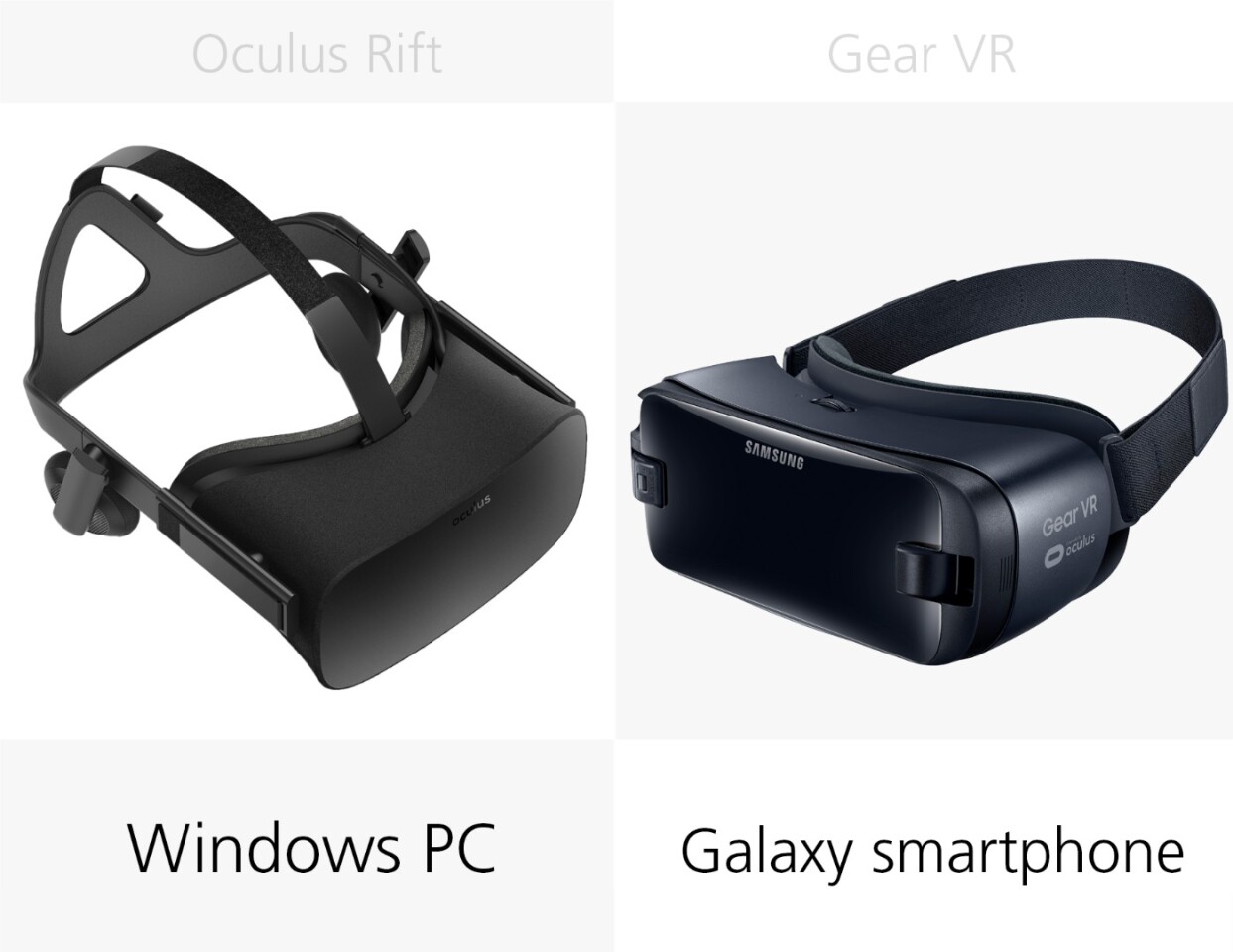
In case you don't know the premise of each headset, the Oculus Rift connects to a VR-ready gaming PC while the Gear VR relies on a Samsung Galaxy smartphone that you slide inside.
Right now the list of Gear VR compatible phones includes the Galaxy S8, S8+, S7, S7 edge, Note 5, S6 Edge+, S6 and S6 edge.
Wireless
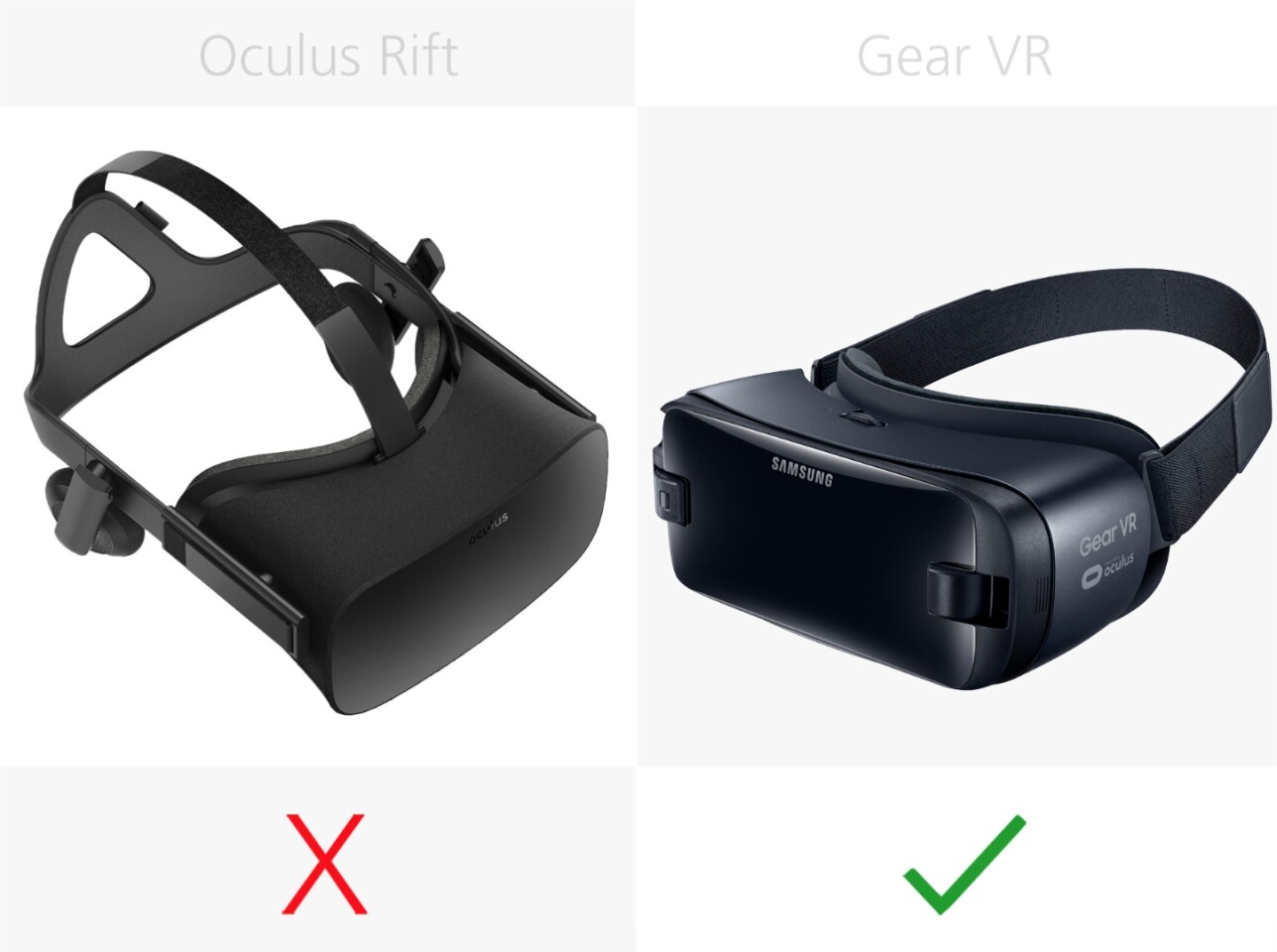
One of the Gear VR's few advantages is that it's wireless, while the Rift has a cable connecting headset and PC.
Positional tracking

One of the biggest downsides to the Gear is that is lacks positional tracking. That means that if you stand, walk around or even lean while using the Gear VR, your entire virtual world will move with you.
When using the Rift's positional tracking (courtesy of one to three sensors set up in your playing space), standing, walking or leaning in real life will have you doing the same inside the virtual world – just how your brain expects it to happen.
We're a little surprised none of the major companies have released any positional tracking options for mobile VR yet, as the current setup is static from the neck down.
Motion controls
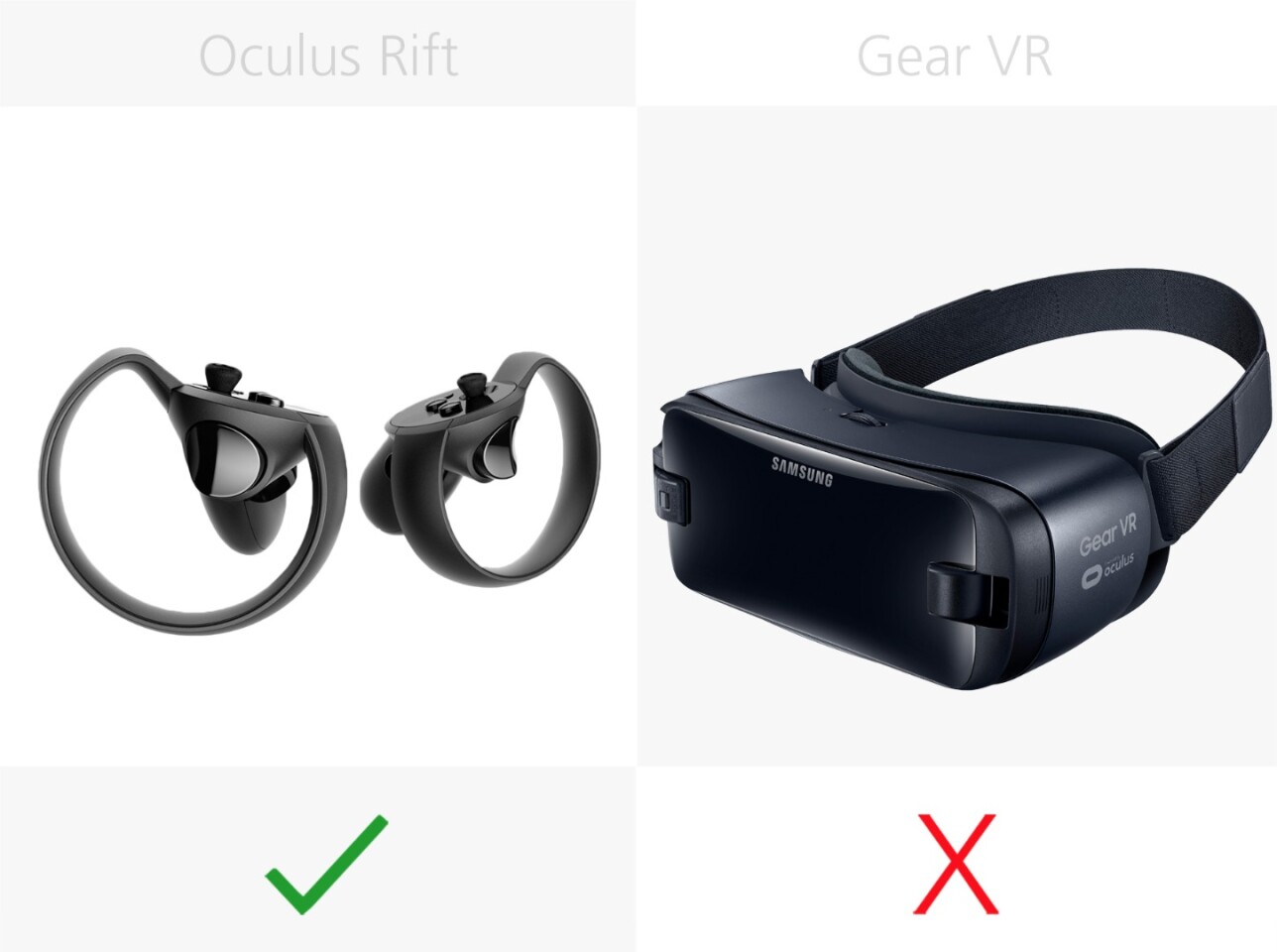
The new Gear VR's biggest change is that it includes a little remote wand (read on), which may be referred to at times as a "motion controller." But let's not confused that with the Oculus Touch controls that are an essential accessory for the Rift. Touch is a pair of controls that "gives you hands" inside virtual worlds, while the Gear's controller is little more than a Wii remote.
Remote
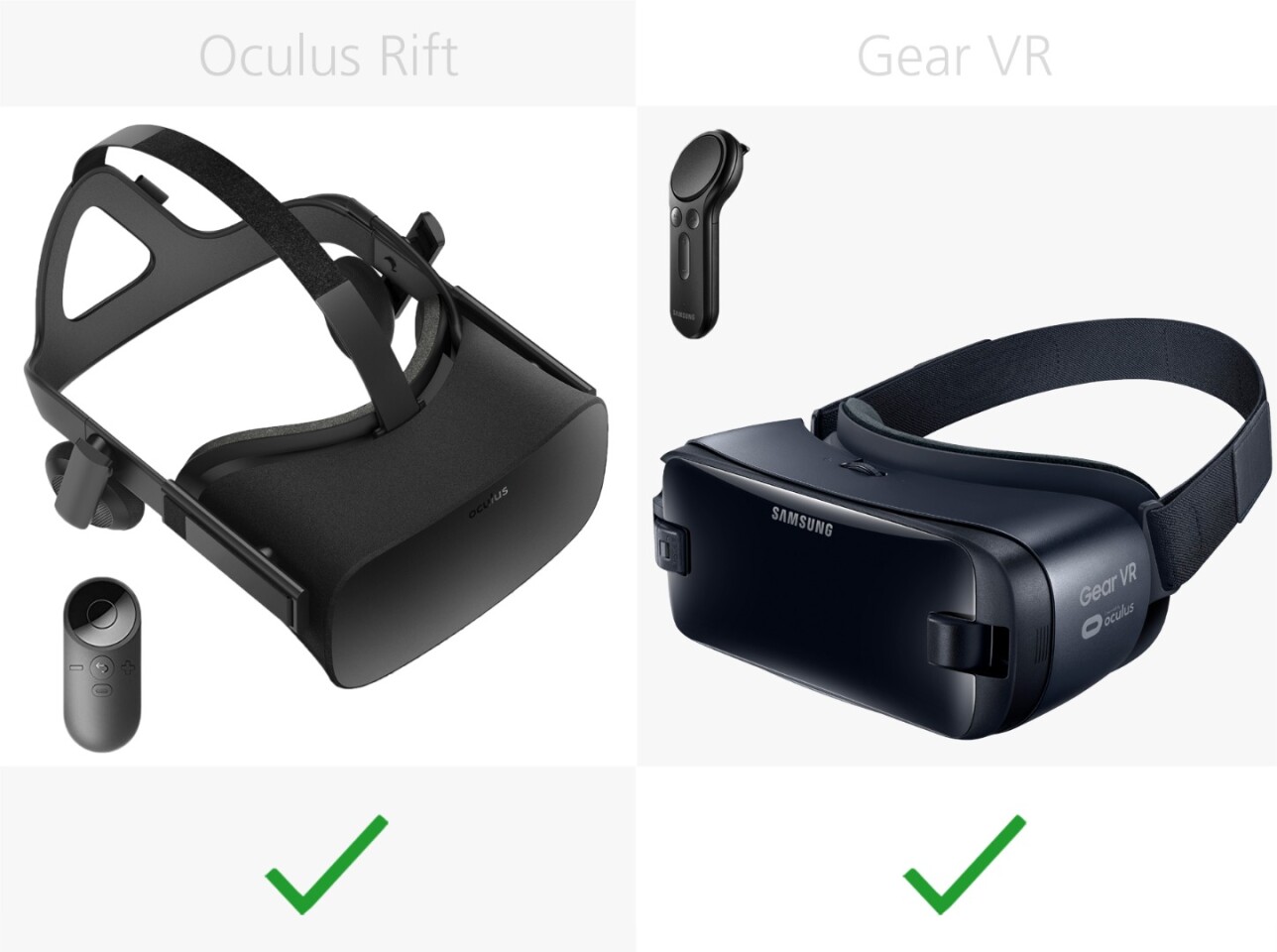
In fact, the Gear VR's remote control is closer to the small navigation remote that ships with the Rift than it is to Oculus Touch. Both serve primarily as pointing/clicking thingies.
Touchpad
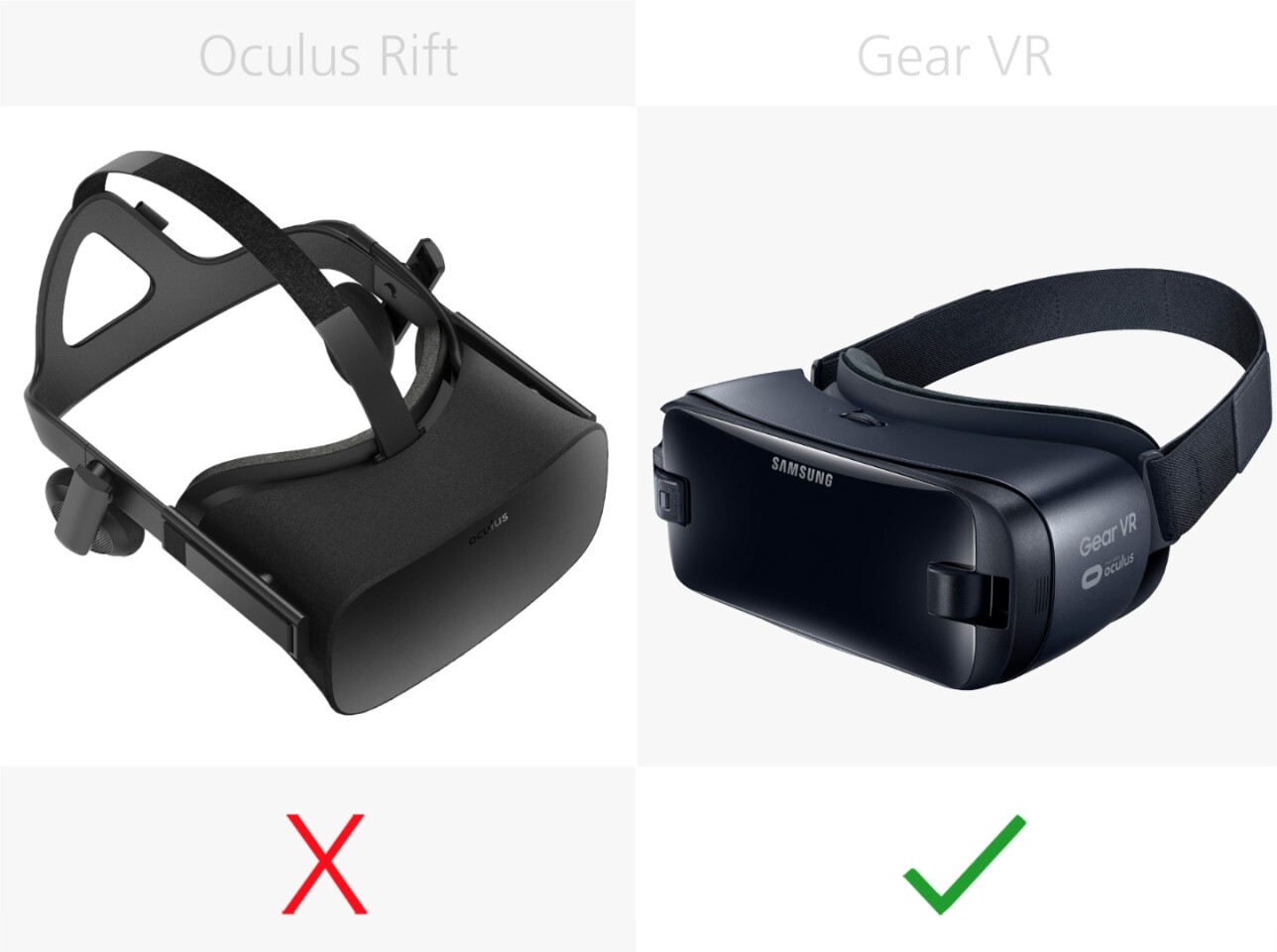
Similar to the remote, the Gear VR also gives you the option of using the trackpad on the right temple of the headset. We recommend the remote, as holding your hand up to the headset for more than a second or two can make your arm tired.
Gamepad

You can use a gamepad with either headset. The Rift includes a very good one (Xbox One controller) in the box.
Built-in headphones

The Rift has built-in headphones that connect to the headset's sturdy band. You also have the option of replacing the stock headphones with some better-sounding (and better noise-isolating) earbuds – known as Oculus Rift Earphones – for US$49.
The Gear VR doesn't have any built-in headphones, but any pair that connects either wired or wirelessly to the Galaxy smartphone inside (including the pair of earbuds that shipped with the phone) will do the trick.
Display resolution
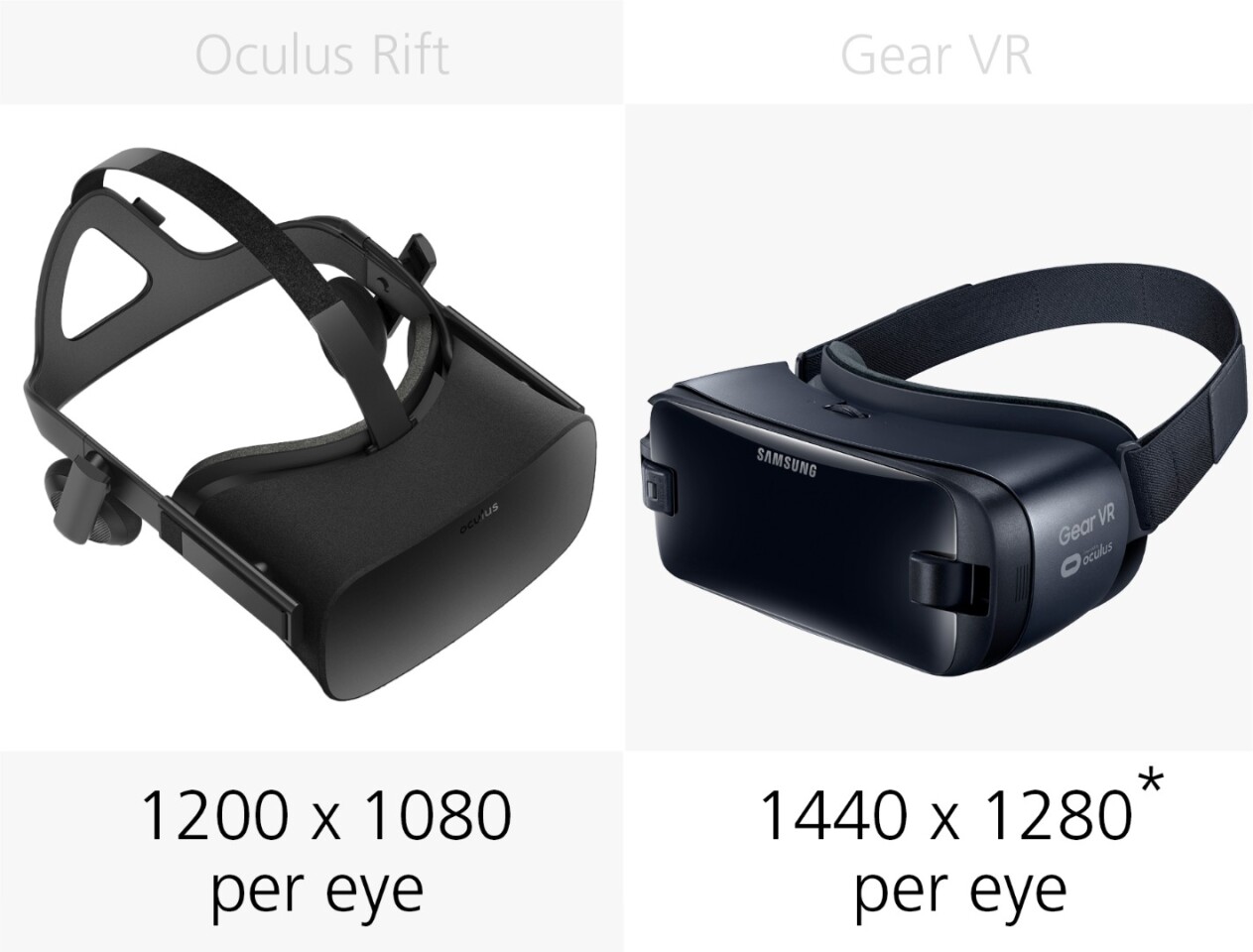
Believe it or not, the lower-end Gear VR has the higher resolution, due to the sharp QHD or QHD+ smartphone screen inside. (The Galaxy S8 and S8+ have a theoretical VR resolution of 1,480 x 1,440 per eye, but we don't know whether the new Gear VR uses their entire screens.)
Don't make the mistake, though, of thinking that means the Gear VR will have the better visual presentation. Even the cheapest compatible graphics card inside the Rift's connected PC will allow for a much richer graphical environment than you'll typically find in Gear VR games or apps.
Display type

OLED (or, in the Gear's case, Super AMOLED) displays are the norm for VR – due to their low persistence and deep blacks.
Field of view
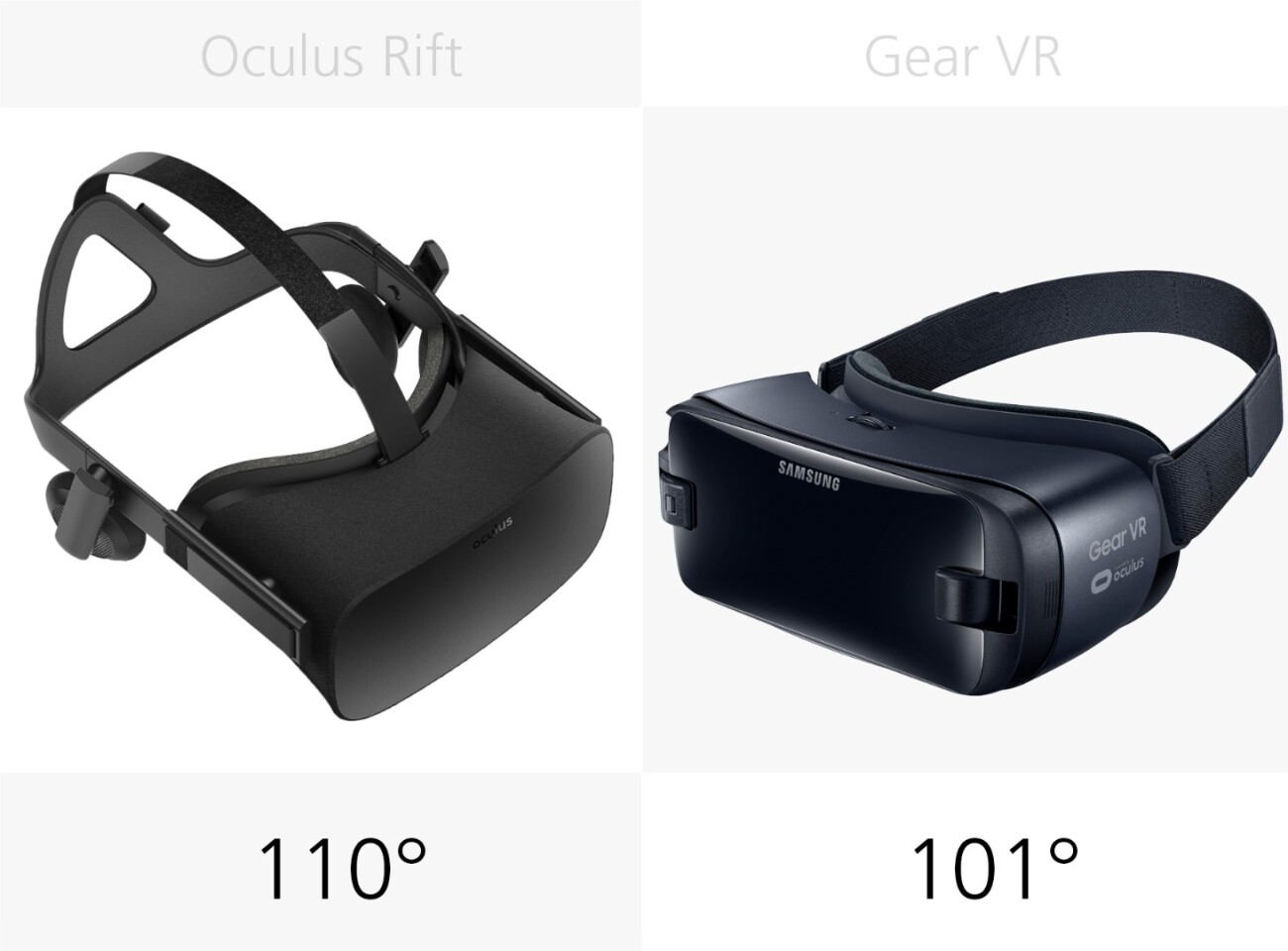
The Rift also has a wider field of view, so you get a wider-open glimpse into the virtual worlds you're visiting.
Refresh rate
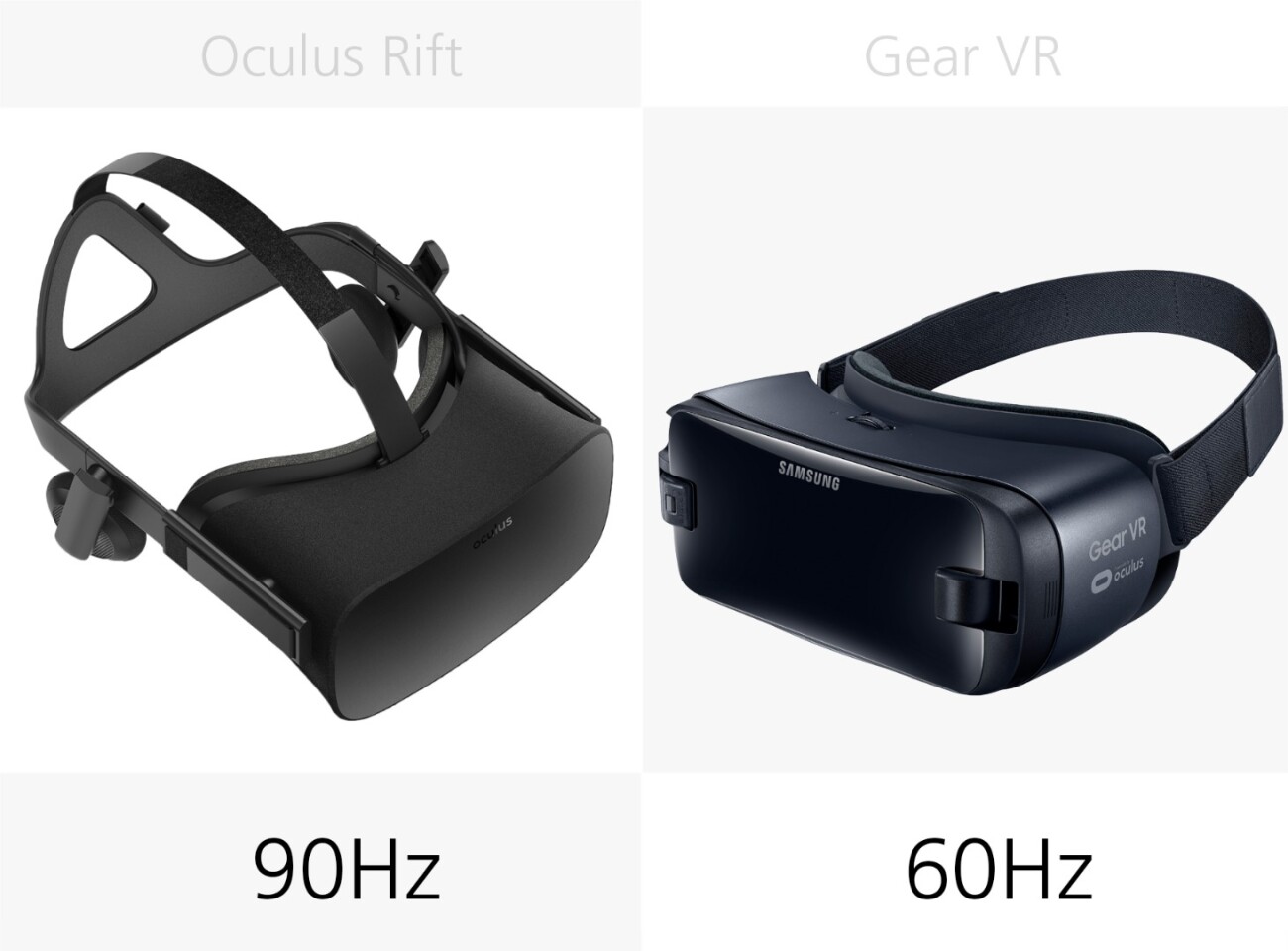
Smartphone screens have lower refresh rates than the Rift's display panels do, which means a 50-percent higher maximum frame rate (90 FPS) on the Rift.
Interpupillary distance (IPD)
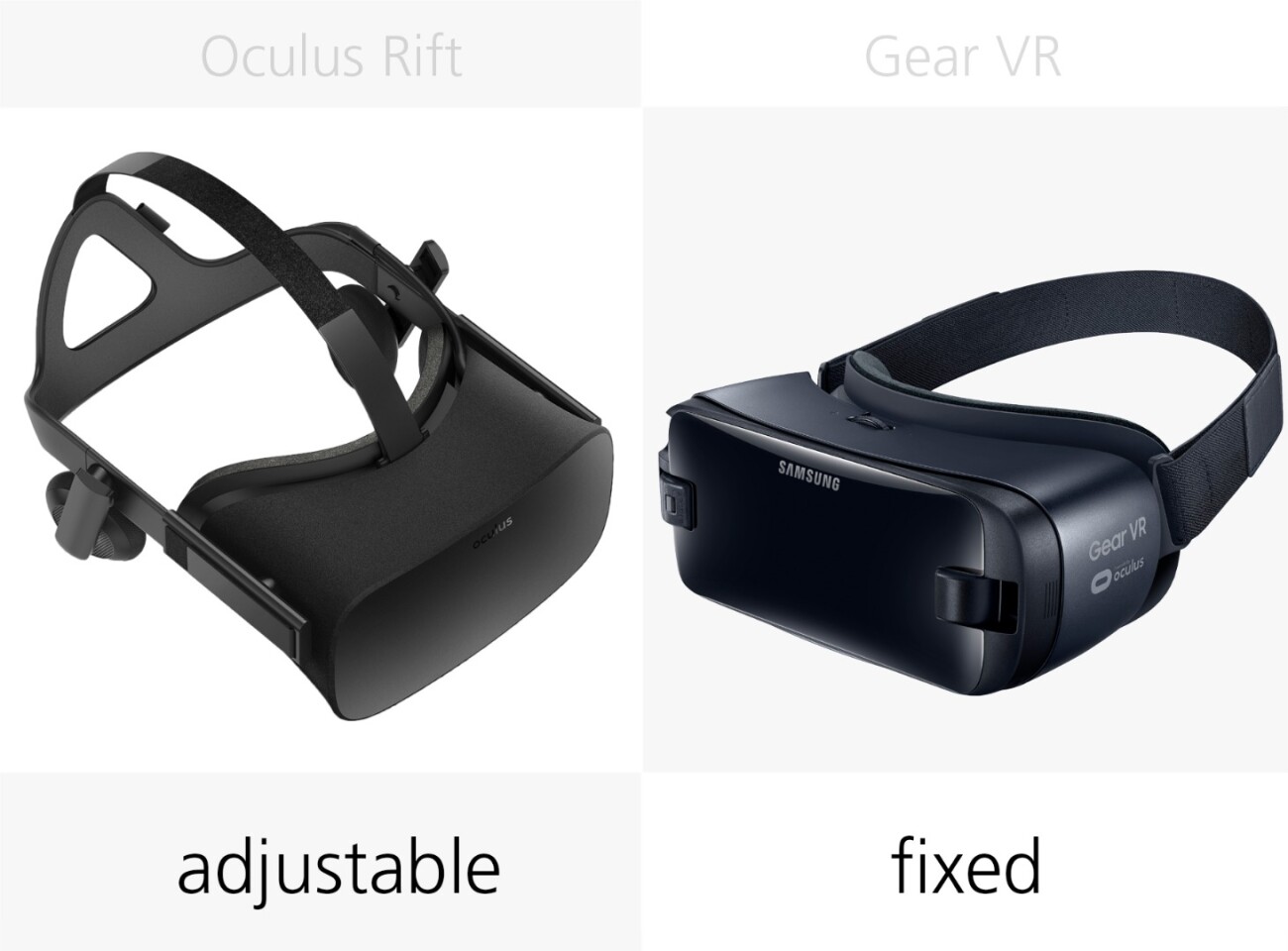
You can tweak the IPD (distance between eyes) on the Rift's lenses, to get them lined up just right for your eyes. IPD is fixed on the Gear VR.
Glasses
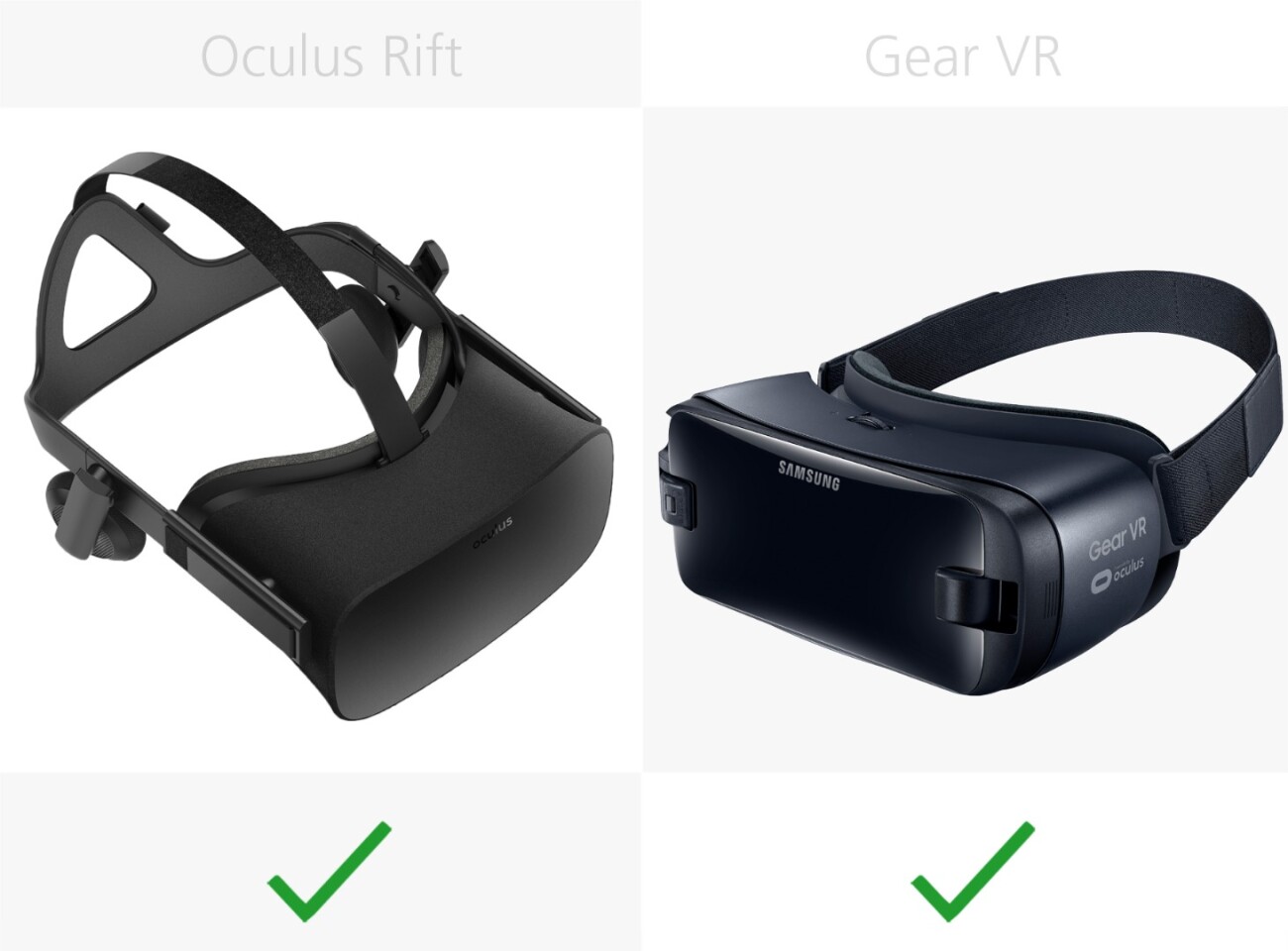
You can wear glasses underneath either headset.
Focus adjustment
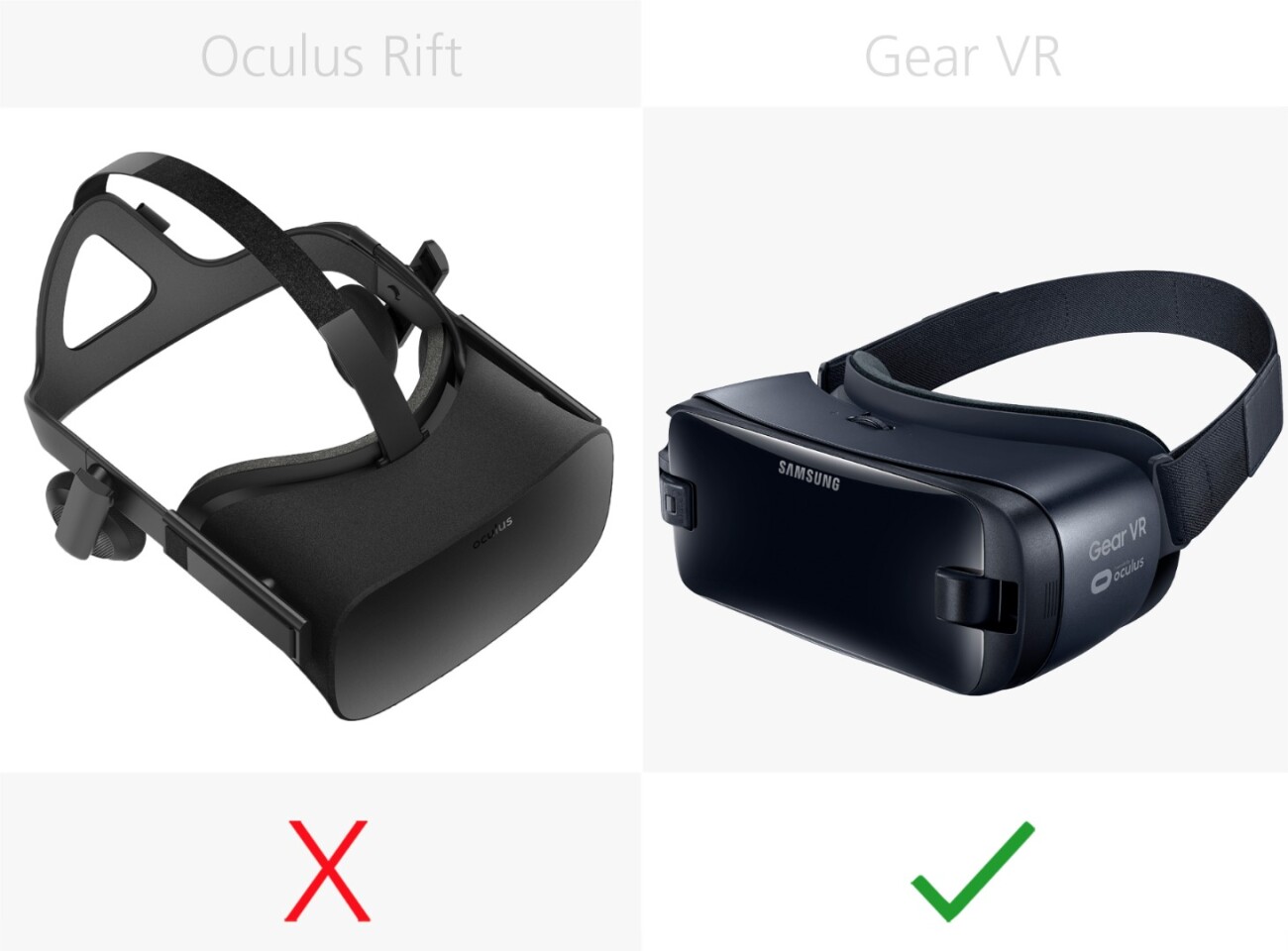
Glasses-wearers can alternatively wear the Gear barefaced, and twist the focus wheel on top of the headset to get things looking clear, even with crummy eyesight.
Standing/room-scale VR
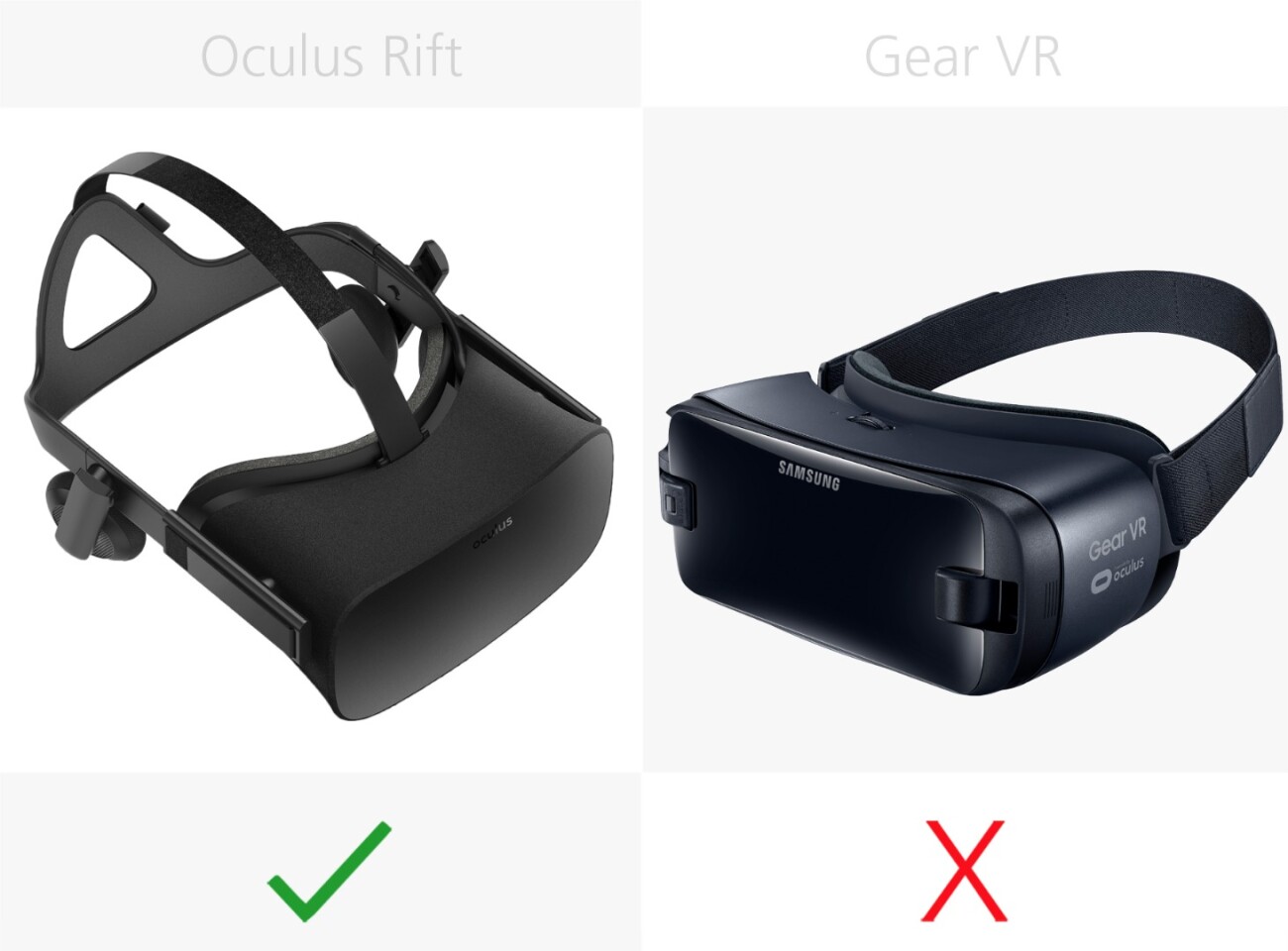
As we mentioned earlier, one of the coolest things about PC-based VR is that you can stand, lean and walk around while wearing the headset – and have your movements mirrored in the virtual world. The Rift can track in 180° with one or two sensors (included with Rift and Touch), or a full 360° if you buy a third sensor for $59 (recommended).
Software (host device)

You'll need a Windows-running gaming PC to use the Rift, while all the Gear VR-ready Samsung phones run a recent version of Android.
The one thing they have in common is Oculus. While the Rift is 100-percent an Oculus/Facebook product, the Gear VR is a collaborative product between Oculus and Samsung. Its apps and games come from an Oculus Home app that has the same UI as the Rift's equivalent Windows app.
Both have leading collections of VR content. You get higher-end gaming experiences, though, with the Rift – due not only to its much greater horsepower, but also to the fact that developers can charge higher prices for their games on a PC platform. (While mobile games on iOS or Android are typically freemium or just a few bucks, PC gamers are more accustomed to $40-60 games.)
Release
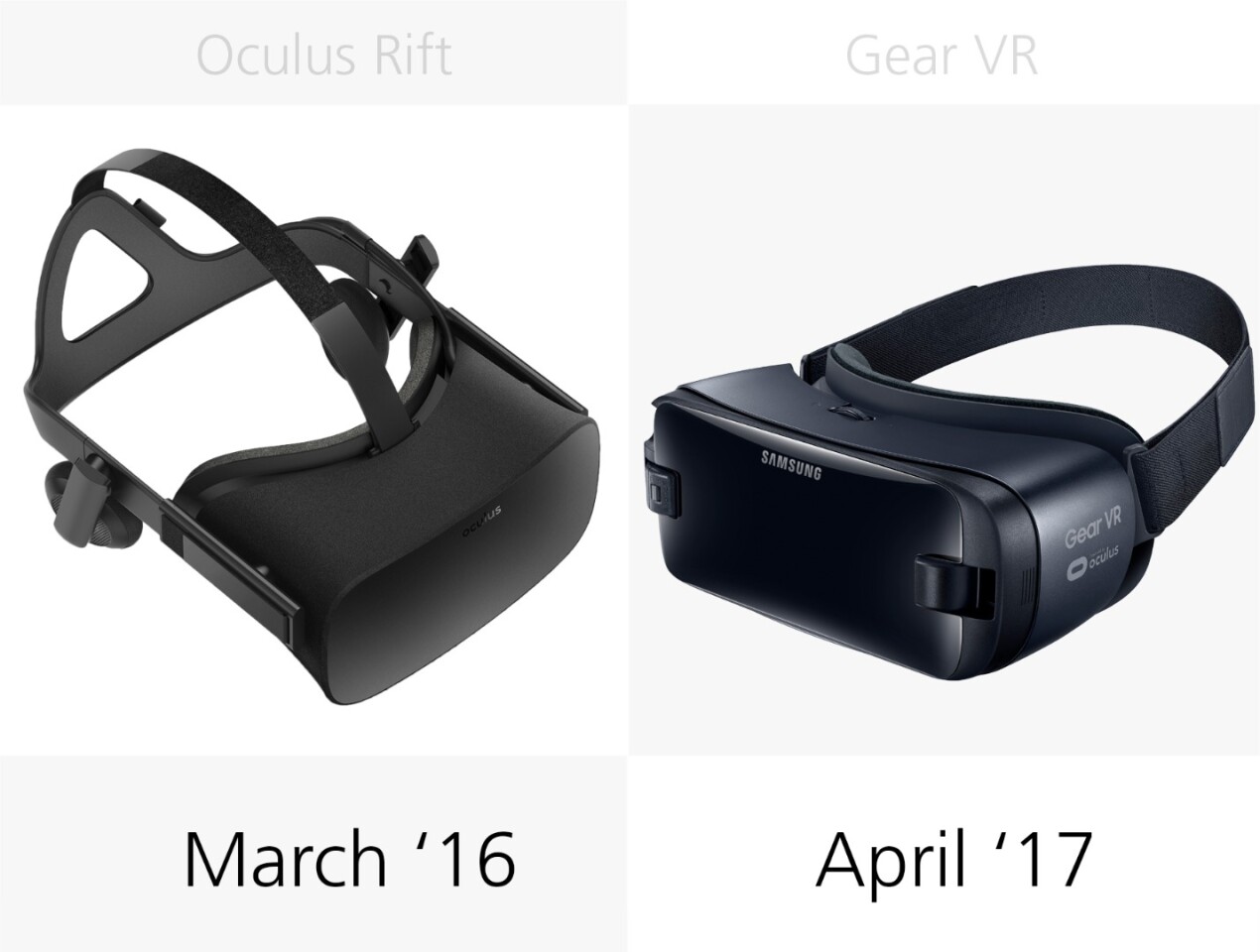
The new Gear VR releases on April 21.
Keep in mind, though, that it's barely changed from the 2016 model, which itself was little different than the 2015 original. If you already own a Gear VR that's compatible with your phone (the 2015 Gear is micro-USB only), then there's no reason to upgrade to the new Gear, especially since you can buy the Gear's new controller alone for $40. (Yes, it works with all previous Gear VR models.)
Starting price (headset)
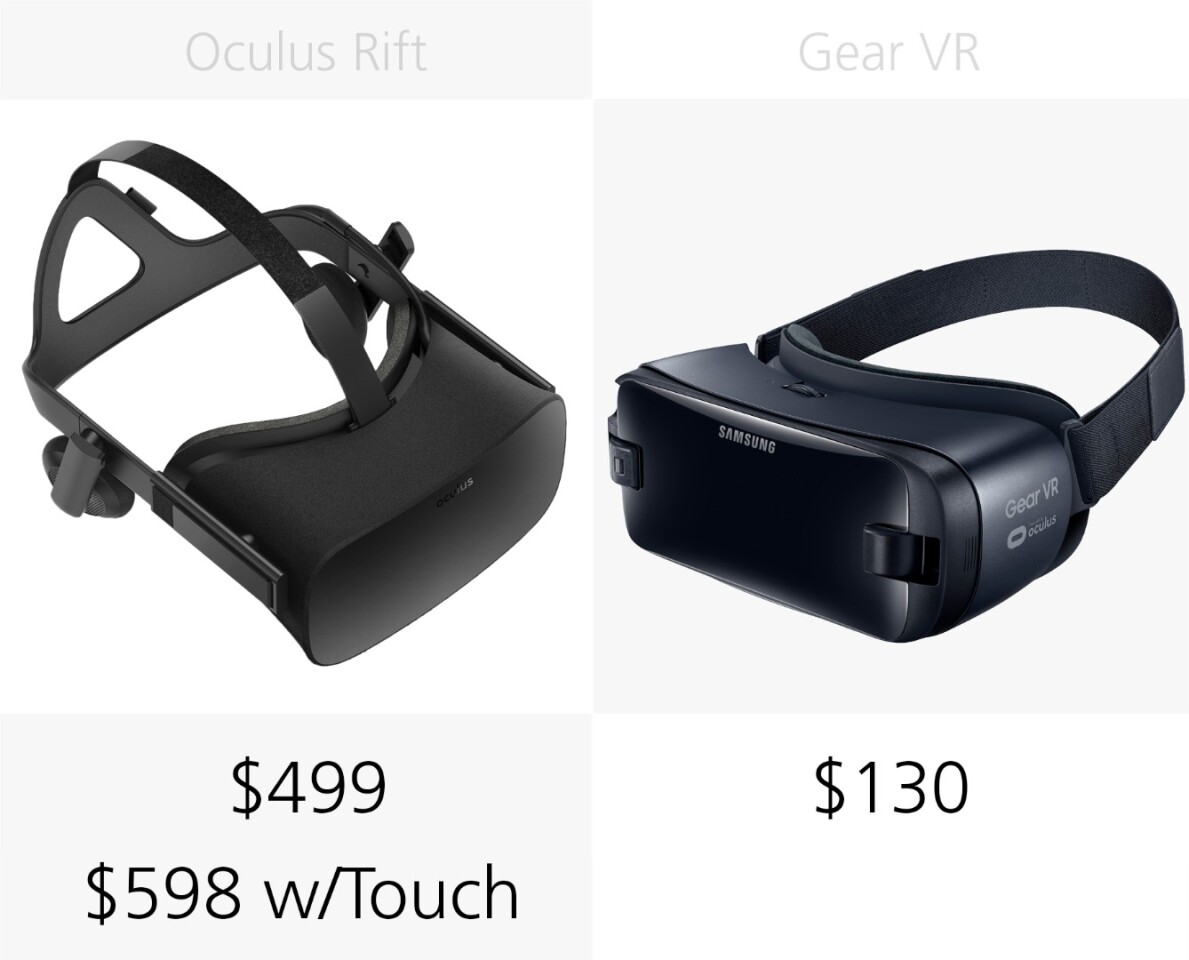
Earlier this year, Oculus dropped the price on the Rift headset and Touch controls. You can now grab both together for $598. (Rift without Touch now costs $499 and Touch alone now costs $99.)
While the Rift got cheaper, the Gear got more expensive. Google's Daydream View includes headset and controller for an aggressive $79, but the Gear's newly-bundled controller brings its total price up to $130.
Starting price (host device)
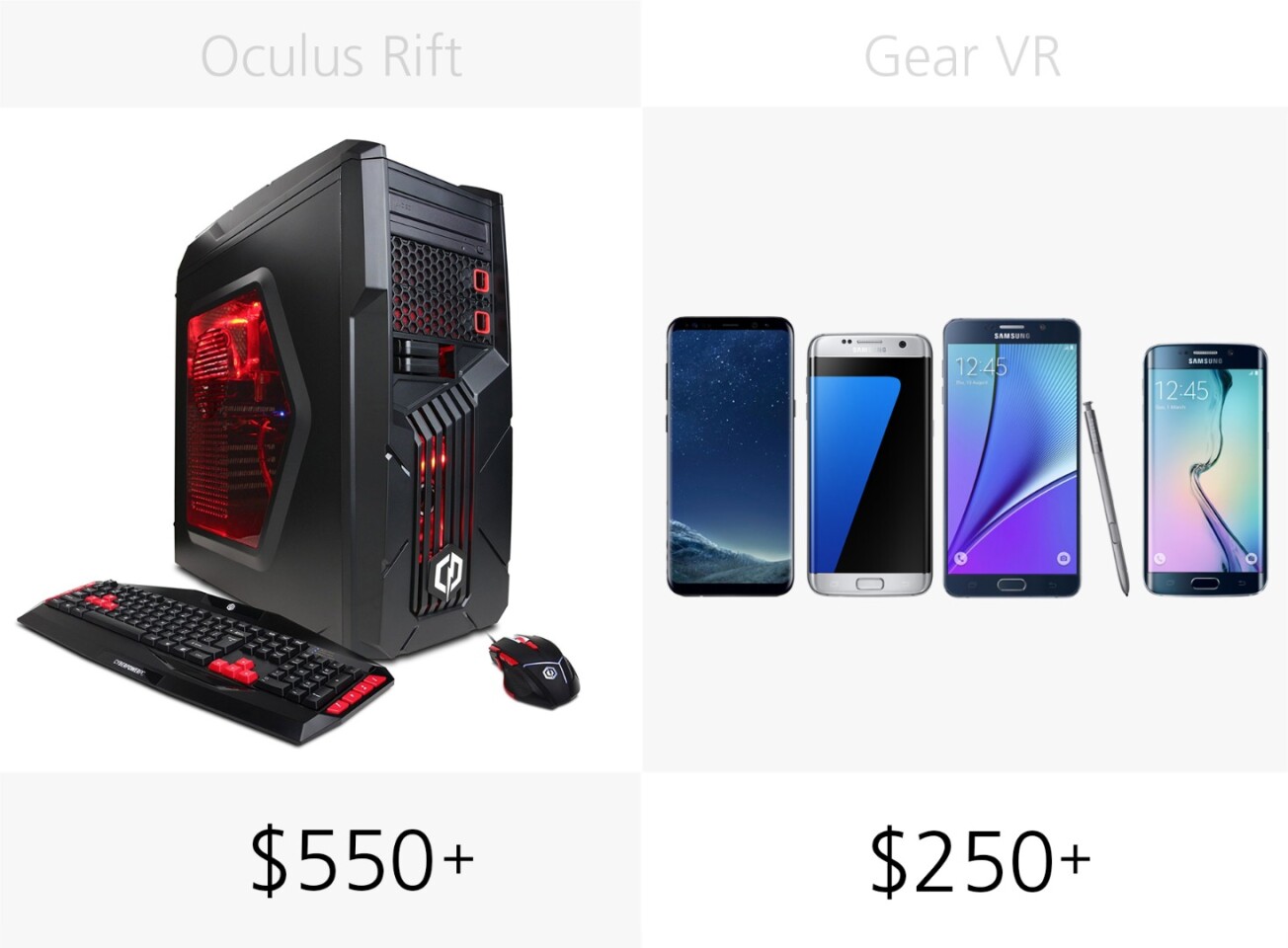
Don't forget that the headset itself is only one part of your purchase, and will get you nowhere on its own.
You can now find a Rift-ready gaming PC for just a little over $500. That's nearly half what you would have paid a year ago, thanks partly to Oculus lowering the minimum specs based on software-based tech that renders frames differently.
The price of a Gear VR-ready Galaxy flagship will vary wildly, depending on which one you go with. We listed the cheapest full retail prices we found for the two-year-old Galaxy S6 as the minimum $250-ish cost, but the new Galaxy S8 and S8+ ring up, respectively, for about $750 and $850. The other Gear phones fall somewhere in between.
While mobile VR is cheaper than PC VR, remember that a) it's only cheap if you already have a VR-ready smartphone, and b) even if you pay a low upfront price for the phone, you're still paying its full retail price over the course of your installment plan. If you use an iPhone or another non-Gear-VR smartphone, then you may consider paying for a much better VR experience in the Oculus Rift, rather than buying a new phone just to use the entry-level Gear VR.
For more, you can read New Atlas' Oculus Rift review, our hands-on with the latest Gear VR and our guide to VR-ready PCs.



























